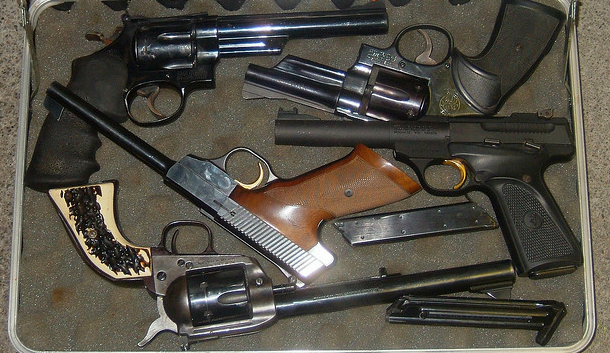As the drug trade—and the organized crime it spawns—spread through Latin America, the region is facing an epidemic of gun violence, according to new U.N. data. Speaking at a conference on the subject in Lima, Peru, Camilo Duplat of the Regional Center for Peace, Disarmament and Development in Latin America and the Caribbean announced that there are some 80 million firearms currently in the hands of civilians across Latin America, foreshadowing a crisis in civilian gun deaths.
The countries with the worst record on gun deaths per capita were Honduras and El Salvador, with rates of 77 and 62 deaths per 100,000 inhabitants. It’s no coincidence that these two countries—particularly Honduras—are the latest countries to see their state institutions overwhelmed by the narcotics trade. Though traffickers had worked in the country for years, organizations such as Mexico’s Sinaloa cartel consolidated their hold in the security vacuum that followed the ousting of former President Manuel Zelaya in 2009. The interim years have seen a slew of officials try—and fail—to tackle the problem. The latest to go, Security Minister Oscar Alvarez, resigned on September 10. The country’s murder rate is brushing 10 times the global average. And similar stories echo across the fragile Caribbean. Guatemala, for example, has been overwhelmed by another Mexican cartel, the Zetas.
When it comes to ownership of a weapon, Venezuela stands out: 10 percent of the population is estimated to own a firearm. Here, criminal activity may be more to blame than drugs. In August, the International Crisis Group released a report detailing how the country has “become a centre of organized crime.” The report continues:
“Different groups, including Colombian guerrillas, paramilitaries and their successors, have been joined by mafia gangs from Mexico and elsewhere. They benefit from widespread corruption and complicity on the part of security forces, seemingly tolerated in the highest spheres of the government.”
Interestingly, the two countries most notorious for their drug violence, Colombia and Mexico, perform relatively better, according to the U.N. data. Mexico’s rate of gun violence is 25 deaths per 100,000 people; Colombia’s is 37. Though in Mexico in particular, here is good reason to believe that violence is on the rise. Independent tallies of casualties from the country’s war on drugs count more than 50,000 deaths in the last half-decade.
What numbers like this foreshadow may be a new stage of the narcotics trade in the region—one that is more fragmented, decentralized, and in many cases, violent. The once powerful cartels of Colombia today face hard competition from Mexican organizations—which are themselves splintering and fracturing, forming alliances with smaller groups, and expanding their reach. The more groups, and the more guns, the more violence.
